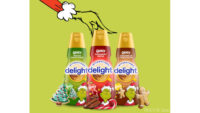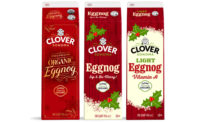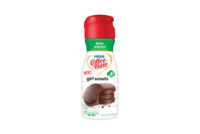
Despite economic gloom casting a spell on consumer confidence this year, America’s darkest holiday is looking bright for retailers. According to industry research firm IBISWorld, Los Angeles, Halloween sales are expected to reach a record-breaking $6 billion in 2009, up 4.2% from the $5.77 billion generated last year.
“Economic recovery appears to be around the corner and consumers are enthusiastically looking to escape their recessionary woes,” says Toon van Beeck, senior analyst with IBISWorld. “Even last year, when the outlook was much worse, the Halloween spirit remained unhindered as we saw total sales actually jump 5.1% from 2007.”

“Although unemployment is still very high, the overall outlook is far rosier today than it was this time last year,” adds van Beeck. “For this reason, IBISWorld expects the upward trend in Halloween expenditures to continue its course for 2009, which despite economic conditions, will prove to be the best year yet.”

All food marketers can learn from Hershey’s approach to marketing candy for Halloween: “All holidays are important, but we strive to make people think of Hershey’s when they think of Halloween,” said Hershey’s rep Jody Cook to Brandweek. “Every year we come out with new packaging, designs or products to keep the excitement around what Hershey’s is offering.”
Can you make your ice cream scream Thanksgiving? How about your cheese sing Christmas carols?

Remember these facts:
• People tend to buy more products during seasonal celebrations than the rest of the year.
• People typically want to get in the holiday mood, so it is easier to persuade them to purchase a product you offer when it contributes to the spirit of the season.
• Because holiday-theme purchases are a deviation from the norm, quality often matters more than price.
• Because the celebration is limited and specific, there is a sense of urgency to buy a limited edition product. Waiting for it to go on sale is not considered an option.
• Finally, people connect seasonal celebrations with their childhood, which makes them more emotional. Emotion is a key factor with influencing purchase decision.
The best part of seasonal products is that dairy foods manufacturers don’t necessarily have to invent new products. Sometimes it is simply a package change or just a merchandising technique. For example, with an increasing number of schools across the country not allowing candy to be brought to school as a treat, single-serve cheese is a healthful alternative for classroom trick or treating.
Check out the following dairy foods being marketed this winter holiday season. Don’t forget, once a celebration ends, there is another approaching.


